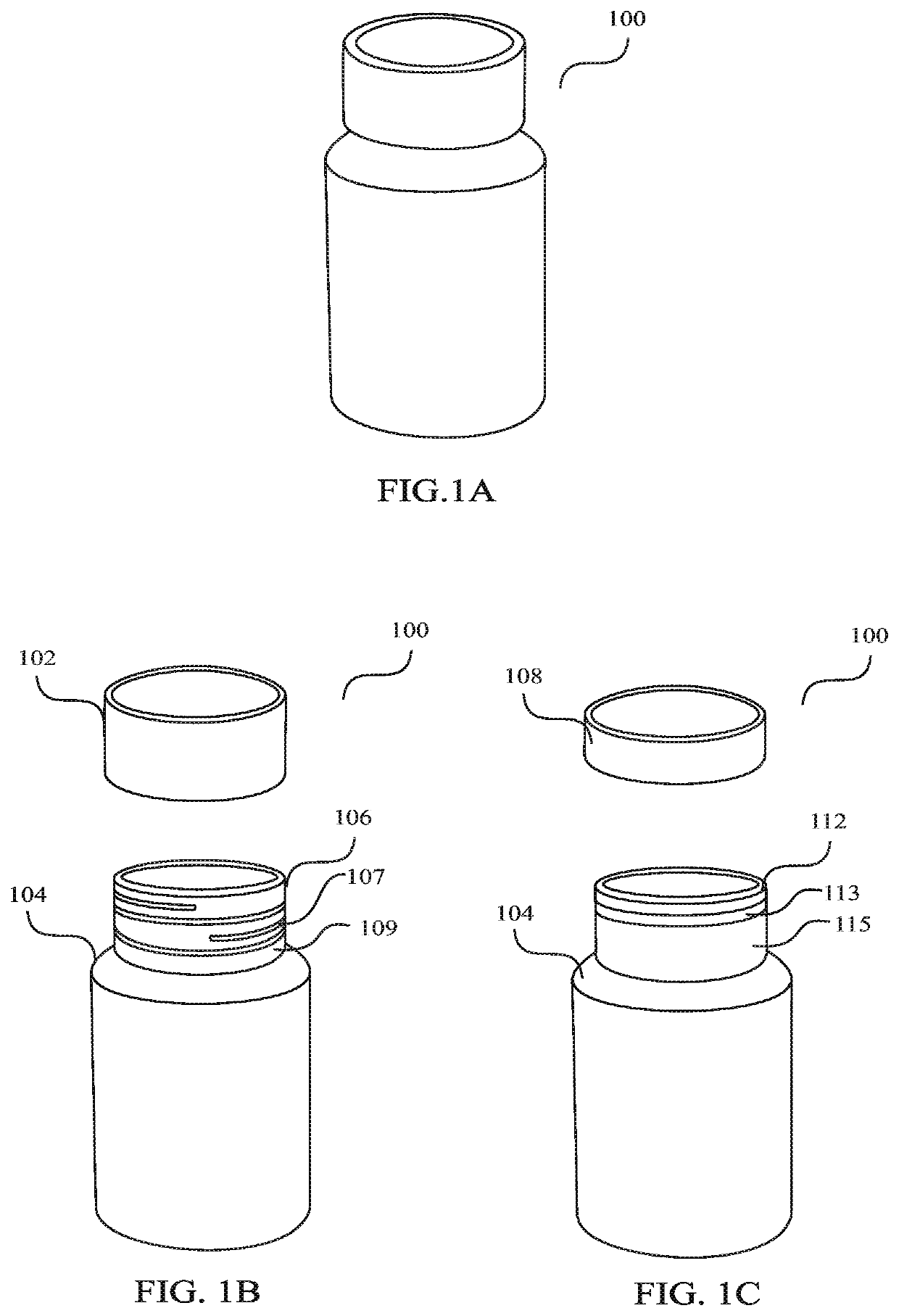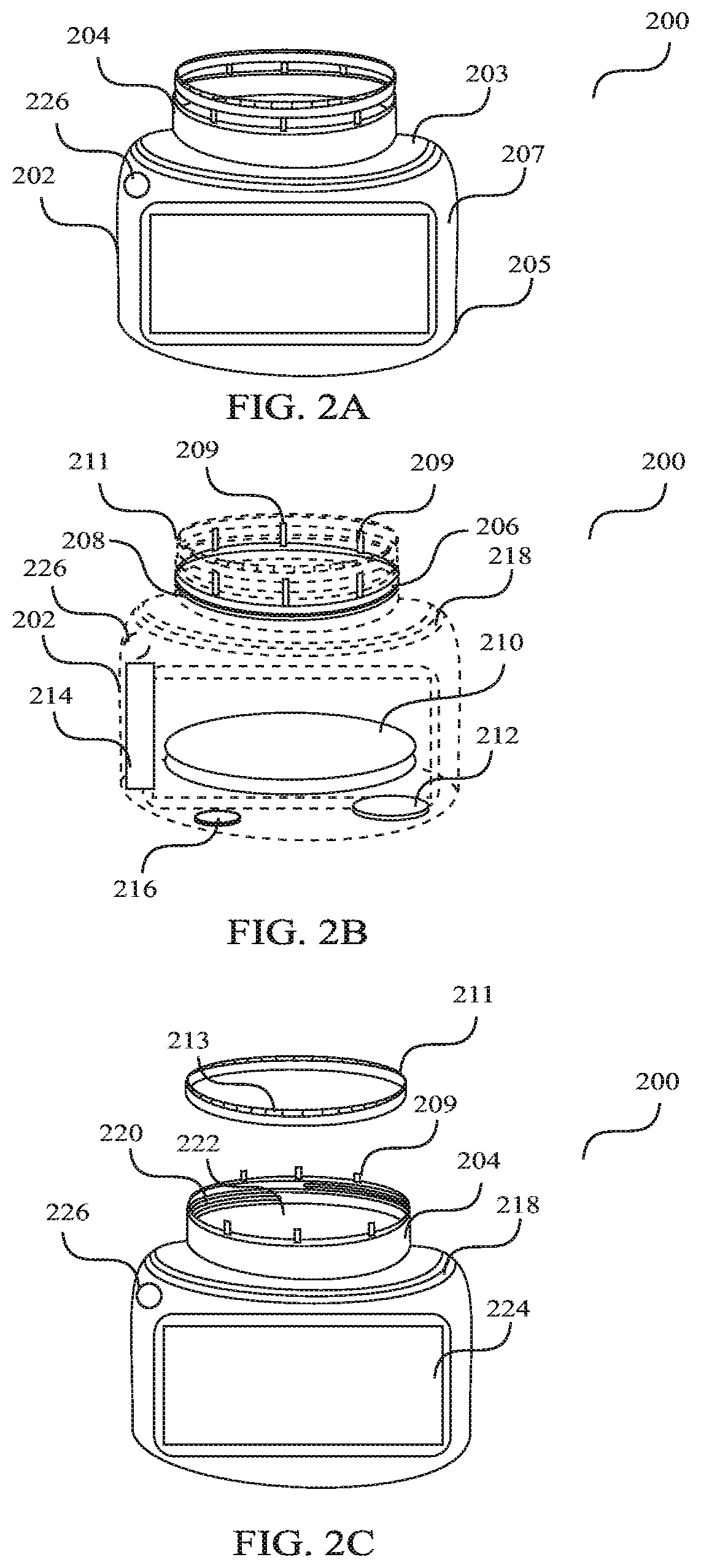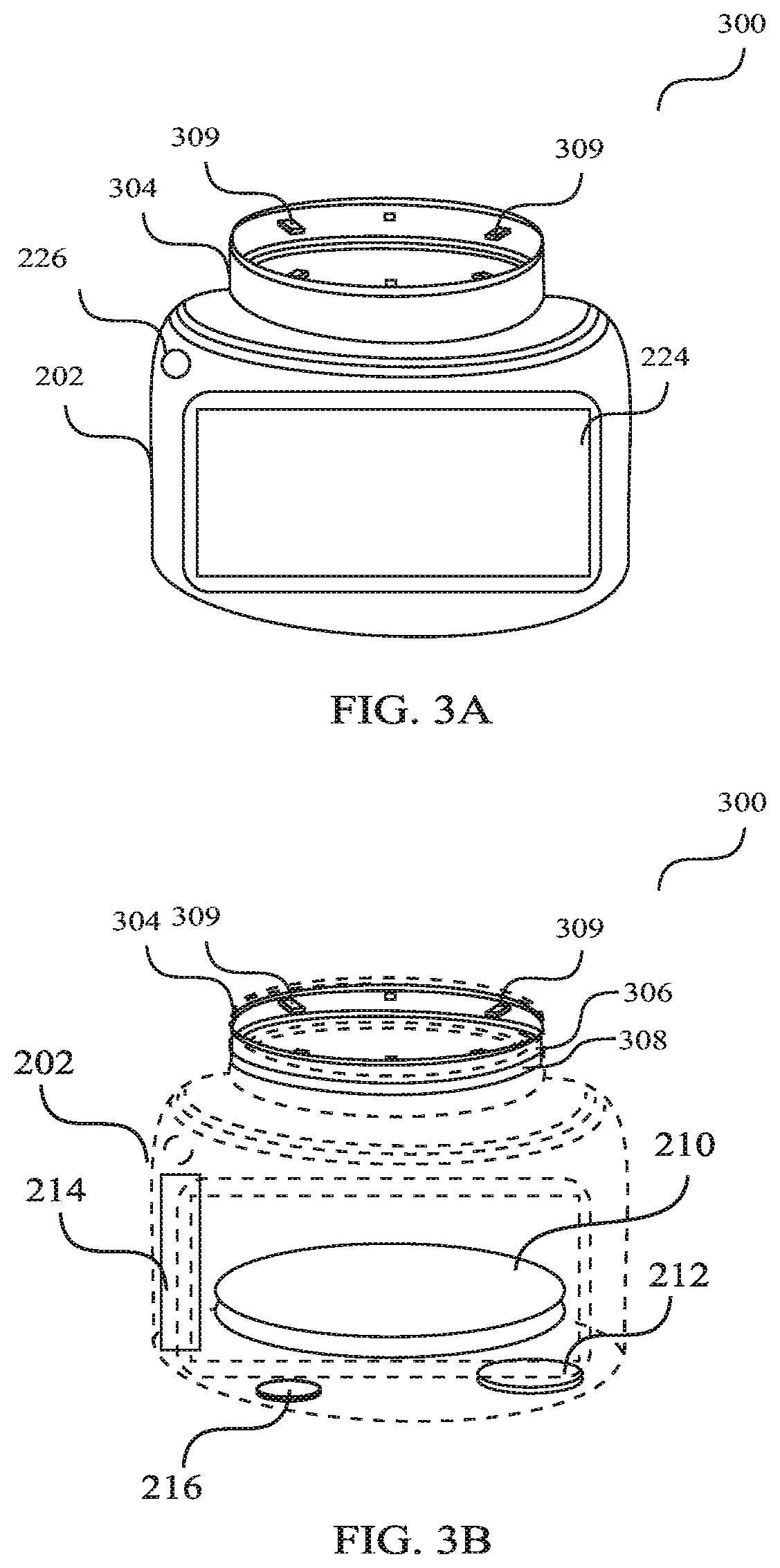System and method for medication compliance and drug abuse prevention
a technology of medication compliance and drug abuse prevention, applied in the field of medication usage management, can solve the problems of medication non-compliance, confusion in the prescribed course of medical treatment, and failure to understand the manner in which the medication is administered, so as to prevent the user of the device from taking accidental overdoses and prevent potential medicinal drug abus
- Summary
- Abstract
- Description
- Claims
- Application Information
AI Technical Summary
Benefits of technology
Problems solved by technology
Method used
Image
Examples
first embodiment
[0058]FIGS. 2A-2C illustrate the medication compliance and drug abuse prevention device / cap of the present invention which is a screw-on type cap. The MEDCOMAP cap / medication compliance cap 200 comprises a main body 202, a cap neck 204, a locking mechanism 206, a weighment module 210 and a control module 214. The main body 202 has a top end 203, a bottom end 205 and a sidewall 207 extending between the top end 203 and the bottom end 205. The sidewall 207 defines a cap internal compartment / space / cavity 222 as shown in FIG. 2C which is closed at the bottom end 205 and open at the top end 203. The cap neck 204 is disposed at the top end 203 and it includes cap threads 220 similar to the threads of a conventional container's cap.
[0059]Reference to FIG. 2B, the locking mechanism 206 comprises an actuator 208, one or more teeth or latches 209 movably connected to the actuator 208 and a collar 211. An example of the actuator 208 can be a solenoid actuator which, when energized or de-energi...
second embodiment
[0061]A snap-on type of medication compliance cap 300, which is the present invention, is illustrated in FIGS. 3A and 3B. Medication compliance cap 300 is similar to MEDCOMAP cap 200 in structure and function except with the difference in the cap neck and locking mechanism. In medication compliance cap 300, the cap neck 304 does not have threads. Instead, the cap neck 304 is so configured that it fits snugly around a snap-on type conventional container's neck when pushed down. The locking mechanism 306 of medication compliance cap 300 comprises an actuator 308 and one or more teeth or latches 309. The teeth 309 are disposed radially around the inside periphery of the cap neck 304. The actuator 308 makes the teeth 309 move toward the center of the cap neck 304 when required.
[0062]In case of the embodiment of the present invention in which the medication compliance cap is provided without any accompanying container, the original cap of a conventional medicine container, in which medic...
PUM
 Login to View More
Login to View More Abstract
Description
Claims
Application Information
 Login to View More
Login to View More - R&D
- Intellectual Property
- Life Sciences
- Materials
- Tech Scout
- Unparalleled Data Quality
- Higher Quality Content
- 60% Fewer Hallucinations
Browse by: Latest US Patents, China's latest patents, Technical Efficacy Thesaurus, Application Domain, Technology Topic, Popular Technical Reports.
© 2025 PatSnap. All rights reserved.Legal|Privacy policy|Modern Slavery Act Transparency Statement|Sitemap|About US| Contact US: help@patsnap.com



